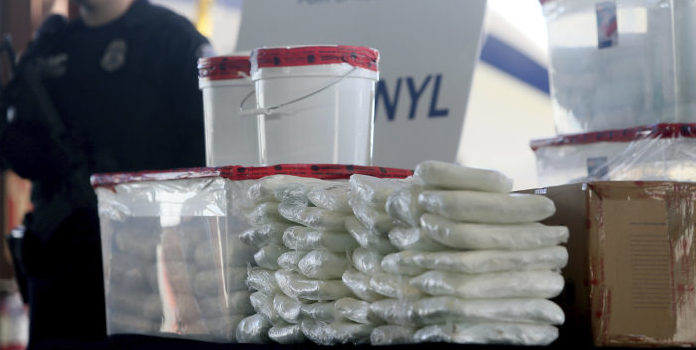(Brett Rowland, The Center Square) – The illicit fentanyl coming from Mexican cartels is becoming more dangerous, according to the Drug Enforcement Administration.
The purity level of illicit fentanyl in the U.S. drug market has increased and the amount of fentanyl found in counterfeit prescription pills has increased, making the nation’s top drug threat even more dangerous, according to the Drug Enforcement Agency’s most recent National Drug Threat Assessment.
A lethal dose of the potent opioid is about 2 milligrams, depending on the opioid tolerance of the user.
In 2022, the average fentanyl pill contained 2.4 milligrams of fentanyl, according to analysis by DEA forensic chemists who test random samples of the fentanyl seized in the U.S. Overall, the tested samples ranged from a low of .03 milligrams to a high of 9 milligrams.
“DEA forensic laboratory results documented that approximately 7 out of 10 fake pills contain a deadly dose of fentanyl,” according to the report.
That’s up from 4 in 10 pills in 2021.
The purity of powdered fentanyl has increased. The average purity of the fentanyl powder samples was 19.2% in 2022, a 33% increase since 2021. The overall tested samples ranged from almost no fentanyl to 81.5% pure fentanyl.
Those numbers underscore the threat the drug poses to users, DEA Administrator Anne Milgram said. She blamed the growing illicit fentanyl problem on two Mexican drug cartels making synthetic drugs with precursor chemicals from China.
“At the heart of the synthetic drug crisis are the Sinaloa and Jalisco cartels and their associates,” Milgram said in a statement.
Illicit fentanyl killed nearly 38,000 Americans in the first six months of 2023, according to the DEA report. Synthetic opioids were involved in 74,225 deaths in 2022 – 68% of the total 111,036 deaths that year, according to the Centers for Disease Control and Prevention.
“These two Cartels are global criminal enterprises that have developed global supply chain networks. They rely on chemical companies and pill press companies in China to supply the precursor chemicals and pill presses needed to manufacture the drugs,” Milgram wrote in a letter released with the assessment. “They operate clandestine labs in Mexico where they manufacture these drugs, and then utilize their vast distribution networks to transport the drugs into the United States.”

